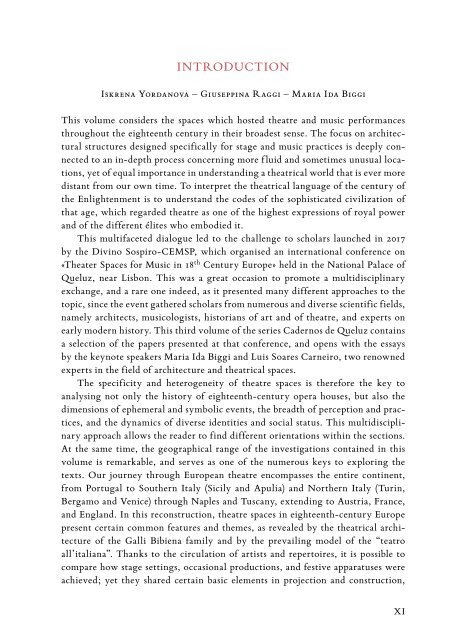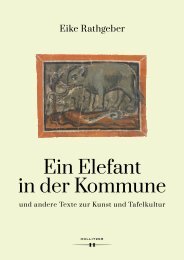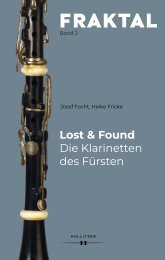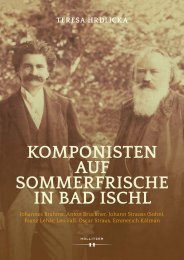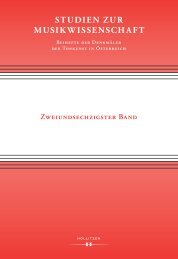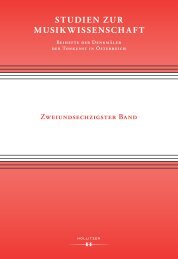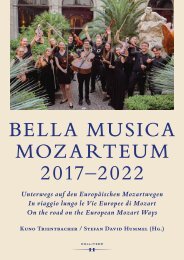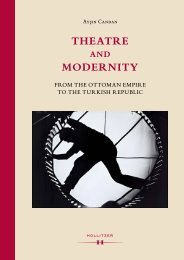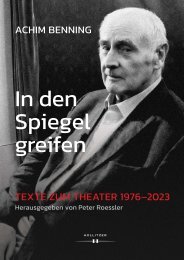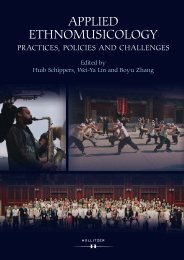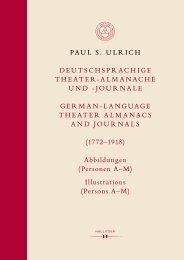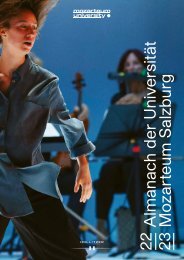Leseprobe_Cadernos 3
You also want an ePaper? Increase the reach of your titles
YUMPU automatically turns print PDFs into web optimized ePapers that Google loves.
INTRODUCTION<br />
Iskrena Yordanova – Giuseppina Raggi – Maria Ida Biggi<br />
This volume considers the spaces which hosted theatre and music performances<br />
throughout the eighteenth century in their broadest sense. The focus on architectural<br />
structures designed specifically for stage and music practices is deeply connected<br />
to an in-depth process concerning more fluid and sometimes unusual locations,<br />
yet of equal importance in understanding a theatrical world that is ever more<br />
distant from our own time. To interpret the theatrical language of the century of<br />
the Enlightenment is to understand the codes of the sophisticated civilization of<br />
that age, which regarded theatre as one of the highest expressions of royal power<br />
and of the different élites who embodied it.<br />
This multifaceted dialogue led to the challenge to scholars launched in 2017<br />
by the Divino Sospiro-CEMSP, which organised an international conference on<br />
«Theater Spaces for Music in 18 th Century Europe» held in the National Palace of<br />
Queluz, near Lisbon. This was a great occasion to promote a multidisciplinary<br />
exchange, and a rare one indeed, as it presented many different approaches to the<br />
topic, since the event gathered scholars from numerous and diverse scientific fields,<br />
namely architects, musicologists, historians of art and of theatre, and experts on<br />
early modern history. This third volume of the series <strong>Cadernos</strong> de Queluz contains<br />
a selection of the papers presented at that conference, and opens with the essays<br />
by the keynote speakers Maria Ida Biggi and Luis Soares Carneiro, two renowned<br />
experts in the field of architecture and theatrical spaces.<br />
The specificity and heterogeneity of theatre spaces is therefore the key to<br />
analysing not only the history of eighteenth-century opera houses, but also the<br />
dimensions of ephemeral and symbolic events, the breadth of perception and practices,<br />
and the dynamics of diverse identities and social status. This multidisciplinary<br />
approach allows the reader to find different orientations within the sections.<br />
At the same time, the geographical range of the investigations contained in this<br />
volume is remarkable, and serves as one of the numerous keys to exploring the<br />
texts. Our journey through European theatre encompasses the entire continent,<br />
from Portugal to Southern Italy (Sicily and Apulia) and Northern Italy (Turin,<br />
Bergamo and Venice) through Naples and Tuscany, extending to Austria, France,<br />
and England. In this reconstruction, theatre spaces in eighteenth-century Europe<br />
present certain common features and themes, as revealed by the theatrical architecture<br />
of the Galli Bibiena family and by the prevailing model of the “teatro<br />
all’italiana”. Thanks to the circulation of artists and repertoires, it is possible to<br />
compare how stage settings, occasional productions, and festive apparatuses were<br />
achieved; yet they shared certain basic elements in projection and construction,<br />
XI


